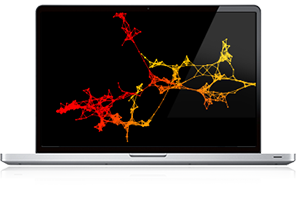
Texas Medical Center Turns To Ayasdi to Automate Discovery
In 2012, the worldwide digital healthcare data was estimated to be equal to 500 petabytes, and on trajectory to grow to 25,000 petabytes by 2020. Recognizing the need to manage its own growing data concerns, the Texas Medical Center (TMC), one of the largest medical centers in the world with 7 million annual patients, has begun implementing a plan to get its data under control.
 In an article this summer, the medical center’s CEO, Robert Robbins, explained the challenges that his organization faces as he implements his mandate of adding programmatic infrastructure to the vast collection of institutions, while maintaining the physical infrastructure. “Collaboration between institutions exists,” he said, “but usually it’s at a low level: at a postdoctoral level, or with affinity groups for things like communication. Look from an outside perspective and ask: What are the most significant, meaningful collaborations that go on in the Texas Medical Center? The answer is, there are none. There’s nothing you can point to and say, ‘This is a world-class, world-recognized collaborative effort that goes on between these great institutions.’”
In an article this summer, the medical center’s CEO, Robert Robbins, explained the challenges that his organization faces as he implements his mandate of adding programmatic infrastructure to the vast collection of institutions, while maintaining the physical infrastructure. “Collaboration between institutions exists,” he said, “but usually it’s at a low level: at a postdoctoral level, or with affinity groups for things like communication. Look from an outside perspective and ask: What are the most significant, meaningful collaborations that go on in the Texas Medical Center? The answer is, there are none. There’s nothing you can point to and say, ‘This is a world-class, world-recognized collaborative effort that goes on between these great institutions.’”
While at some level, Robbins says that the competition between TMC’s 50-plus institutions has been healthy, he recognizes that the world is changing, and he sees the need for TMC to change with it. In facilitating that change, Robbins is implementing a strategy to turn TMC into a world class innovation zone with a central focus on complex data research across disciplines – namely health policy, stem-cell research, clinical trials, genomics, and innovation. “Data is the key to revolutionizing all of them,” Robbins said.
This week it was revealed that the organization is standardizing on the graph analytics platform Ayasdi. Ayasdi turned heads earlier this summer when the relative newcomer to the budding graph analytics space announced a $30.6 million dollar Series B funding haul with participation from IVP, Citi Ventures, GE Ventures, and Kholsa.
Using its Topological Data Analysis (TDA) technology, which essentially combines graph analytics with machine learning, Ayasdi’s algorithms look for similarities in data, producing what it calls “query-free insight discovery.” In an article last week, Ayasdi mathematician Gunnar Carlsson explained it like this:
Topological Data Analysis… represents data using topological networks. A topological network represents data by grouping similar data points into nodes, and connecting those nodes by an edge if the corresponding collections have a data point in common. Because each node represents multiple data points, the network gives a compressed version of extremely high dimensional data… Topological networks allow individuals to easily interrogate machine learning outputs in a way that highlights high value segments of the data.
You can see a video which gives some color to the Ayasdi concept here:
Ayasdi, which actually started as a technology project funded by the National Science Foundation (NSF) and the Defense Advanced Research Projects Agency (DARPA), has been picking up momentum over the last year. Aside from the funding round mentioned previously, it had previously picked up a $10.1 million round in January of this year as part of its company launch.
In addition to announcing this week that it had picked up the Texas Medical Center as a customer, Ayasdi also announced a new collaboration that it is doing with the supercomputing aficionados at the Lawrence Livermore National Laboratory (LLNL). Through the collaboration, LLNL will use Ayasdi’s technology to gain insight on a range of big data projects, including energy, climate change, medical technology, and national security.
“A big challenge for many organizations today is to extract patterns, information and knowledge from large, complex and multi-dimensional data sets,” said Anantha Krishnan, Director of LLNL’s Office of Mission Innovation. “By combining LLNL’s powerful computing and scientific infrastructure with Ayasdi’s innovative machine learning platform, we aim to better understand the information in complex data sets that, previously, we could only comprehend in limited or abstract ways.”
Back at the Texas Medical Center, officials are saying very similar things. A recent estimate by McKinsey & Company said that if US healthcare were able to leverage big data correctly, more than $300 billion in value could be created each year. Using Ayasdi as a launch pad, Robbins hopes to be part of that movement.
Related items:
Facebook Graph: More Than a Trillion Edges Served
Graph Analytics Appliance Enables Personalized Medicine
FoundationDB Gets $17M to Push ACID Machines


























